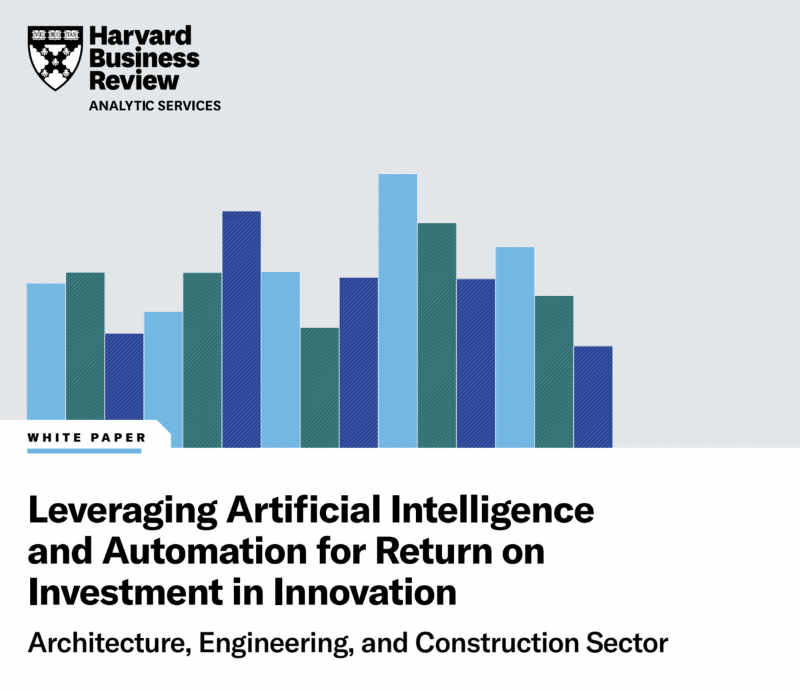Leveraging AI and Automation for Return on Investment in Innovation
Published on 18 Jan 2023

Innovation qualities are vital in today’s marketplace. Forrester Research identifies a tech-driven and sustainable innovation strategy as "mission crucial" for preventing disruption and weathering continual change and finds that firms that embrace this sort of innovation strategy grow 2.6 times faster than those that do not.
Artificial intelligence (AI) and automation are often seen as major innovation accelerators since they help firms to perform better, quicker, more sustainably, and more effectively while decreasing costs. McKinsey & Co.2 surveyed 1,843 worldwide cross-industry firms in 2021 and found that 87% reported a cost reduction due to the use of AI in manufacturing, and 69% observed a cost reduction in product and/or service development. Fully 63% and 70%, respectively, expected revenue growth in manufacturing and product and/or service development as a consequence of AI adoption in 2020.
"The business environment is in constant flux, including supply chain, energy, climate, and consumer expectations. John Suh, vice president of Hyundai Motor Group and head of New Horizons Studio, a team creating an ultimate mobility vehicle (UMV) in Fremont, California, believes that innovation is practically a must for corporate expansion. Because of change, you must do things differently.
The Need For AI Automation
The design and manufacturing (D&M) and architectural, engineering, and sand construction (AEC) sectors are turning to AI and automation to fuel innovation by optimizing processes, identifying new patterns and insights, and automating data-based decision-making. AI and methods such as digital twins, generative design, and design for manufacturing and assembly (DFMA) can unleash worker creativity and expand inventive activity beyond niche-use cases to affect the organization's overall mission and strategic direction.
In addition to consumer and competitive challenges, considerations such as sustainability and the need to recruit technologically aware younger people are boosting the demand for innovation to power future development. However, it may be difficult for firms in the construction and manufacturing ecosystems to recognize and capitalize on creative ideas. Cultural opposition, ingrained corporate traditions, and ambiguity over installing innovation-enabling procedures are typical hurdles to promoting and operationalizing innovation.
Organizations looking to monetize innovation in the D&M and AEC sectors must discover what adjustments they need to make to foster and embrace innovation to navigate tomorrow’s marketplace successfully. This change demands a knowledge of why innovation is so essential and how innovative companies gain a competitive edge by adopting AI and similar technologies. It also involves boosting cooperation, recognizing issues inhibiting innovation, and using the best practices that have assisted early adopters in D&M and AEC in transitioning to innovation-fostering corporate processes and cultures. Establishing diverse, cross-functional teams and formalizing an innovation-centered framework are two elements of a successful shift.
Innovation is challenging the business from the ground up, according to Angelo Yu, founder, and CEO of PIX Moving, a multidisciplinary developer and manufacturer of modular smart cars headquartered in Guiyang, China. Innovation in design, engineering, and manufacturing will ultimately alter how we work, live, and play, similar to how Henry Ford facilitated the widespread acceptance of automobiles and Apple ushered in the digital era.
The Obligation to Innovate
According to Gartner, innovation involves three important components: originality, execution, and a beneficial result.
In the AEC and D&M industries, the practical effects of innovation include being able to dramatically decrease time, cost, and risk while boosting the sustainability of building and manufacturing processes. Take Bryden Wood, a London-based architecture, engineering, and design business focusing on innovation in the construction sector, as an example.
The company is automating various AEC processes and implementing design for manufacturing and assembly, which has allowed for a 20% to 30% reduction in capital costs, a 20% reduction in project schedules, and the configuration of designs in two days that would have taken a traditional design team 15 months. Similarly, PIX Moving has utilized AI-driven design algorithms to decrease the number of components required for a 3D-printed, autonomous-driving skateboard chassis platform by a factor of ten and to minimize lead time by 75 percent.
These are just two instances of firms that adopted innovative processes, technology, and attitudes more aggressively than their rivals and are reaping substantial rewards as a consequence.
Download Harvard Business Review Analytic Services' whitepaper to learn more about Artificial Intelligence and Automation for Return on Investment in Innovation only on Whitepapers Online.
